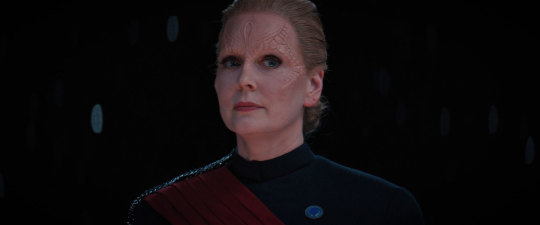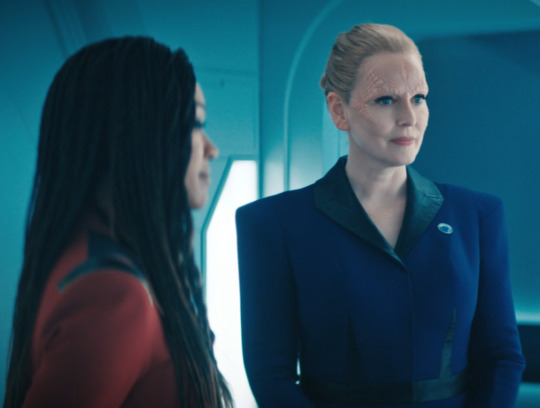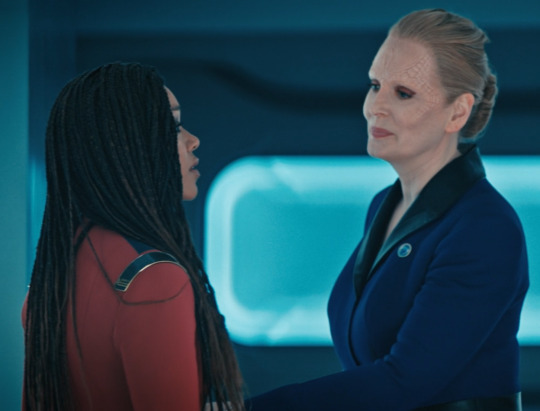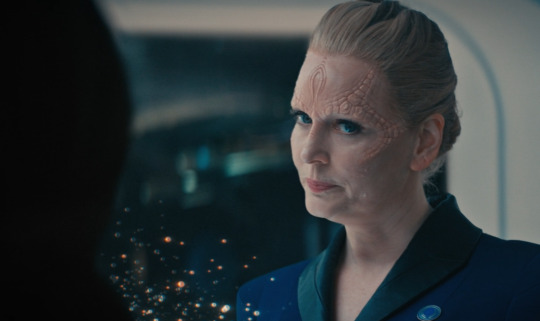#data scarcity solution
Explore tagged Tumblr posts
Text
Synthetic Data for AI Training: Solving Data Scarcity by 2026
Synthetic data for AI training bridges real‑world data gaps, enhances privacy, and scales model development by 2026, offering scalable, ethical, and cost‑effective solutions. When high‑quality datasets run scarce, synthetic data for AI training ensures continuity, privacy compliance, and scalability across sectors like healthcare, finance, and autonomous systems by 2026. Visit now 🔍 What Is…
0 notes
Text
It is a warehouse the size of 12 football pitches that promises to create much-needed jobs and development in Caucaia city, north-east Brazil. But it won’t have shelves stocked with products. This vast building will be a datacentre, believed to be earmarked for TikTok, the Chinese-owned video-sharing app, as part of a 55bn reais (£7.3bn) project to expand its global datacentre infrastructure.
Caucaia [...] suffers from extreme weather events, including droughts and heavy rains, according to data from the Digital Atlas of Disasters in Brazil and the Integrated Disaster Information System.
In 16 of the 21 years between 2003 and 2024, a state of emergency due to drought was declared in the city at least once. In 2019, almost 10,000 people were affected by water shortages, the Digital Atlas of Disasters shows. As reservoirs were depleted, the water became unfit for consumption, leading to crop losses and difficulty accessing basic food for the population.
Datacentres use vast amounts of energy and water to cool their supercomputers. Nevertheless, public authorities are greenlighting their construction in cities that have persistently suffered from drought. Caucaia is not an isolated case.
According to the Digital Disaster Atlas, five of the 22 datacentres planned are located in cities that have suffered recurring droughts and water shortages since 2003.
Big tech companies admit that they are consuming water in sensitive areas due to the demands of AI. In its 2024 sustainability report, Microsoft said that 42% of its water came from areas of “water stress”, and Google said the same year that 15% of its water use was in areas of “high water scarcity”.
The large amounts of water used by datacentres keep computers and machines cool, preventing them from overheating. However, some is lost to evaporation, which can exacerbate the climate crisis in the regions where they are set up. As AI models improve, they need more processing power, which requires more energy and cooling. This means water and energy consumption are set to increase.
The International Energy Agency conservatively estimates that datacentre energy consumption will double to 945,000 GWh by 2030 – the equivalent of Japan’s annual energy consumption. Emerging countries such as Brazil will account for about 5% of the projected growth over this period.
Water consumption is set to rise significantly, with 4.2bn to 6.6bn cubic metres needed for global AI demand in 2027, according to researchers at the University of California, Riverside, and the University of Texas at Arlington. This is more than half of the UK’s annual water consumption.
However, according to Shaolei Ren, a researcher at UC Riverside and co-author of the article, there is an essential difference between withdrawal (the water taken out of the system) and consumption (water withdrawal that evaporates) regarding datacentres.
“While residential users typically don’t use much of the water they withdraw, datacentres often use 60% to 80% of it,” says Ren. In other words, the water is lost.
Datacentres can be cooled in two ways. One is air conditioning, a power-inefficient solution for extensive facilities. Water is the second option.
One technique is to use radiators with fans in a closed water circuit, where the water is recycled or reused, similar to the system in a car engine, but costs are high. Another option is cooling towers, which remove heat from hot water using evaporation, so the cold water can be pumped back into the system. The last method involves spraying water into the air to make it more humid and lower the temperature.
But there are still some inefficiencies. “Both evaporation and spraying result in water loss,” says Emilio Francesquini, an associate professor at the Federal University of ABC.
A small datacentre with a 1MW capacity consumes 25.5m litres of water yearly, losing 1% (255,000 litres) via evaporation.
10 notes
·
View notes
Text

The Future Unscripted: Professor Nolan’s Musings on AI, NHI, and Humanity
Professor Garry Nolan’s conversation offers a profound exploration of the intersections between unconventional phenomena, artificial intelligence (AI), and humanity’s future. His personal anecdotes of unexplained childhood experiences serve as the catalyst for his professional inclination towards the unorthodox, underscoring the importance of considering unconventional data in scientific inquiry. By embracing anomalies, Nolan exemplifies the transformative potential of curiosity-driven research in the pursuit of novel knowledge.
Nolan’s scientific approach is notably inclusive, as evidenced by his exploration of Non-Human Intelligence (NHI), a term that broadens the scope of inquiry beyond traditional notions of extraterrestrial life. The analysis of enigmatic materials, such as Bismuth Magnesium, and the theorized capabilities of NHI, including mastery over anti-gravity and energy, prompt intriguing questions about coexistence. His analogy between human-ant interactions and potential human-NHI relations offers a thought-provoking perspective on mutual existence, shifting the focus from competition to symbiosis.
The future, as envisioned by Nolan, is intimately tied to AI’s development and application. He posits AI as a dual-edged solution: a tool for expediting scientific breakthroughs and resolving global crises, as well as a potential precursor to artificial superintelligence (ASI) that could embody a form of consciousness. This speculative horizon highlights the imperative of careful AI management to ensure equitable global access to education and growth. Nolan’s emphasis on AI-driven objective decision-making processes also presents a compelling case for reforming the current political landscape, which is often mired in tribal histories and scarcity mindsets.
A notable aspect of Nolan’s discourse is his critique of contemporary leadership and power structures, juxtaposed with the conflict resolution methods of bonobo chimps as a paradigm for more harmonious human interactions. This dichotomy underscores the urgent need for innovative, peace-centric approaches to global relations. Ultimately, Nolan’s optimism about humanity’s future, rooted in our capacity for crisis-driven ingenuity and the judicious leveraging of AI, presents a compelling vision of a world where challenges are met with collective brilliance and equality in education and growth becomes a universal reality.
Gary Nolan: Alien & UFO - The Critical Question Nobody's Asking (Gita Wirjawan, Endgame Podcast, December 2024)
youtube
Friday, December 6, 2024
#artificial intelligence#non-human intelligence#unidentified aerial phenomena#uap#future of humanity#scientific approach#unconventional thinking#ai and society#technology and humanity#futurism#speculative science#interdisciplinary studies#innovation and progress#human knowledge and understanding#interview#ai assisted writing#machine art#Youtube
7 notes
·
View notes
Text

Saiga antelope in Kazakhstan. Albert Salemgareyev will conduct research to better understand and resolve rising conflict between saiga and local herders over dwindling water resources, in a country at risk of water scarcity within a decade
Albert Salemgareyev | Building trust in data: finding solutions for saiga antelope and people in west Kazakhstan
Photograph: 2023 Whitley awards

Saiga in Kazakhstan
#whitley awards#photographer#saiga antelope#antelope#anima#mammal#wildlife#kazakhstan#albert salemgareyev#nature#conservation
42 notes
·
View notes
Note
Here's an ask for you! Was there a specific on-screen moment when you started shipping Michael/Laira?
Oh thank you!!
They have an ARC. They have an on screen arc, and I'm so accustomed to making things up (Beverly Crusher/Kathryn Janeway), or working with a handful of episodes that don't have an arc (Maleficent/Regina Mills).
Long post!
Michael is finally captain, which has been a long time coming, and she loves it, she's good at it. Season 4 is peak Michael.
I have wanted to have a ship for Michael since the show started, because I adore Michael, and nothing really hit me until Laira and Michael started talking to each other.
Episode 1 - wrecking ball era
They don't really like each other at first. Laira is "using a moment that should be about the cadets" and Michael is "a huge swing of the pendulum" who doesn't understand that sometimes she might lose.


Michael hasn't lost for awhile, so Laira has a point. Michael needs to save everyone (this is a really common rock star captain thing).
And fate has handed Michael a whole set of events where she was literally the only person in the galaxy who could fix it. Michael found a way to peacefully end the Klingon war without going as dark as parts of Starfleet wanted too.
Michael and her crew literally saved the future by going ahead in time, preventing control from getting the sphere data. It's a huge sacrifice, and they were willing to make it, and it's also a huge win. Everyone was saved.
They have this really honest, almost brutal conversation, where they both have very valid points and they're polite to each other, but they are in opposite places. Michael wants to bring everyone home. She doesn't want to mitigate life and death. Laira thinks she might need too.


And they're from very different places. Michael's from this incredibly optimistic time, where bad things happened (the Klingon war, losing Captain Georgiou, Control tries to evolve and Starfleet really grasps at straws) but the bad things are brief, and traumatic, but they persevere. They're rebuilding after the war and maybe they can be allies with the Klingons some day: Michael has retained her hope, and for good reason. Things improve, she has solutions. Her skillset is phenomenal.
Laira grew up in a universe with scarcity. She was a cargo pilot, and didn't go to the Science Academy, or the Academy on Earth, or even really see the Federation or Starfleet as what they were in Michael's time. Starfleet has hundreds of ships where Michael came from, Starfleet is a force for hope. Laira's whole life has been in a galaxy where Starfleet is tiny, and can't help, and they try, but the needs are so great, and everyone is so isolated that hope is a harder thing.
They have a whole set of conversations about leadership, and balance, and hope, and Laira pushes Michael to be better in the beginning.
They start out standing together, and end standing on opposite ends of a table. The blocking is fun, their whole conversation is so fun. They're an mildly antagonistic allies to lovers at this point. They believe in the Federation, but have differing approaches to leadership, and don't have a high opinion of each other but the mutual respect is there.
I rewatch this episode when they need banter, or I need to have them argue. I desperately wanted them to talk more after this episode. I loved Laira immediately, but I didn't write fic for them yet.
So I had interest, but I wasn't shipping shipping yet.
Episode 4 is when I did that.


In episode 4, mutual respect era, Laira conspires with Vance to get Michael and Saru to come help her with diplomacy. It's an fun insight into Laira's personality that she asked Vance to pretend to be sick, or told him to, because she wasn't sure if she wanted to ask Michael and Saru directly.
She moves pieces, and Michael's a really powerful piece.
Laira (and T'Rina) perform their political theater (and you find out at the end that they've been friends for a long time, and kind of set it up together, which is also interesting. I like the world building in this ep.
The shipping comes when Michael goes to convince Laira that they shouldn't give up. Michael and Saru come up with a plan, and it's a very Michael plan. It wouldn't work if she wasn't who she is.
Bringing Michael in is Laira's last ditch gamble, and it works. Michael throws herself at the problem and comes up with an elegant solution and proves that she is actually so adept at the thing she doesn't like. (politics).



(the table is BACK and they're at opposite sides again, but they move closer to each other! There's a whole meta I need to write about this table.)
The last scene of this episode is the one that launched my ship. They're achieved the mission. Ni'Var is coming back into the Federation. Saru and T'Rina are flirting so they're both amused by that. They're alone together and there's a fire and Ni'Var conference rooms are romantic, pretty lighting.

Laira walks around Michael, and sits on the conference table. It's one of the first times we see her relax. She sits down, not because the meeting is sitting, but because she wants to. Maybe when it's just Michael she can?
It's this shift in power and an opening and vulnerability because she must have had such a long day, and Michael saved it, and she doesn't have to be the President for Michael.

They open up to each other! Laira complements Michael for being good at politics even though she hates it. Laira admits that Vance wasn't really sick (in a roundabout way, she's coy and flirty about it, so it's not a real admission, which suits her).
Michael looks at her like THAT. Sonequa has the most beautiful face and this looks absolutely destroys me.

Laira tells Michael that she had to protect President T'Rina (who warned her that the negotiations were going to implode).
They have this exchange.
Michael walks over to her. "If you wanted my help, you could have just asked me."
They lean on the table together. Laira bites her lip. "Truth be told, I wasn't sure you were the right person for the job, but I'm glad you were."
"I appreciate that. I know transparency isn't always possible in your position but it is what I need, to best serve you and the Federation. So if you could be more forthcoming in the future, I'd appreciate that as well."
"Understood, Captain."
So much happens here. Michael says what she needs, and she's direct and polite. She has the most impeccable etiquette and always calls Laira 'ma'am'. Here she doesn't. Laira listens, nods, accepts what Michael needs and she's the one who uses her rank as a sign of respect.
Then they shake hands, which Laira initiates and it's beautifully shot with the fire in the background, AND Laira covers Michael's hand with hers before she leaves. The music swells. There are strings and horns!! (it's so fun!).
(Also this was on during touch starved COVID era and holding hands felt like a BIG DEAL).


Laira takes Michael's request to heart and asks her for help the next time she needs it.
I shipped them, so very much after this. Laira's not in the next two episodes, but she is in episode 7!
Episode 7 - power couple era.

Michael teases Laira about wanting Earth back in the Federation, Laira admits that her mother's family is from Earth and her mother never got to see it. (Vulnerability! ambition! Michael reading her so easily).


Michael stands next to Laira through the negotiations. Laira tells Michael that she has to be neutral but she thinks Michael can steer the negotiation, if she's ready for that.
(transparency!)
Michael gives an fantastic speech for peaceful first contact, and they're successful. (Laira's hands her are really cute).


Then there's "Captain, I need you with me" and I was so gone. They work together so well to accomplish things. Laira sees Michael's incredible abilities. Michael reads what Laira is thinking. They achieve something they both want together.
Episode 8 - not many people have the ability to surprise me, captain.

The episode starts out with Laira livid. She paces, her diction is razor sharp, and she fidgets with her hands. It's the most unsettled we've seen her so far.
Laira not being able to deal with something and Michael trying to help was what set off my 170,000+ word WIP that is over two years old. Something unexpected should happen and Laira should be mad about it was the starting point.
(also the episode bookends with this shot, which is really clever).

I have a whole set of thoughts about episode 10 and the end of the season, but this was how I got started. This look helped. Michael surprises Laira by how competent she is. Michael does looking several steps ahead thing and turns a loss into a win and it's very coy and fun.

Laira wings her hands later in engineering and that obviously meant she needed to go through something with michael and the Discovery crew could help and...
I did the most shipper me thing I could possibly do and started a fic where she got pregnant.
Thank you so much for asking!!! this was so fun to put together. (and took days).
Special mention to the way Laira can make "captain" both a compliment and an insult, depending on her mood. (it's the other half of my Michael saying "ma'am" kink.
15 notes
·
View notes
Text
The eGroundwater project

Groundwater is at the centre of water management challenges, supplying 65 per cent of drinking water and 25 per cent for agricultural irrigation in the 27 EU Member States.
The main pressures on groundwater are overexploitation and climate change, particularly in regions experiencing urbanisation and population growth, with groundwater depletion leading to a whole host of negative effects.
Like many parts of Southern Europe, southern Portugal is experiencing drought and a decline in rainfall which has impacted the productivity of the region's agricultural sector, explains Vânia Sousa, environmental researcher at the University of Algarve.
“With the effects of climate change, we don’t expect the drought to ease. We need to work together on new sustainable solutions to help solve regional water scarcity,” she stressed.
The eGroundwater project
Led by environmental scientists from the University of Algarve and supported with climate data such as irrigation forecasts and historical weather patterns, the ‘eGroundwater’ project is a mobile application centred around a collective, citizen-driven approach to ground water management.

The eGroundwater platform aims to give farmers and groundwater users consolidated information on the condition of water supplies and technical specifications while also allowing users to upload and share their own data.
The app incorporates seasonal meteorological forecasts from the Copernicus Climate Change Service (C3S) which are used to anticipate cumulative precipitation in agricultural areas. This helps farmers predict their water quota and optimises the use of water during irrigation season.
Additionally, CMIP6 climate projections from C3S are used to communicate future recharge scenarios and anticipate how climate change can impact groundwater levels. This information is presented to groundwater users during workshops, for feedback and to design pathways for adaptation in line with future groundwater availability.
Paradigm shift in water use and management
Innovations such as the eGroundwater application present a paradigm shift in water use and management, putting the power back into the hands of water users. The approach is proving successful in nearby regions including Morocco, Algeria and Spain.
“One of the most critical issues on groundwater management is data scarcity. Big Data and Enhanced Information Systems (EIS) are key to overcoming this obstacle by providing users and managers useful, precise and sound data and information.”
The platform facilitates water usage simulations, co-building of new management scenarios, setting up of a citizen information system on groundwater availability and dynamics that underpin the eGroundwater solution.
10 notes
·
View notes
Text
The Resolution of Water for Every Home is Becoming a Reality: Rajvardhan Rathore’s Vision for a Sustainable Future

In recent years, one of the most pressing global challenges has been water scarcity. With climate change affecting the natural water cycle and the growing demand for fresh water due to rapid urbanization and population growth, water conservation has become more crucial than ever. In India, where many areas face chronic water shortages, the call for a sustainable solution has been growing louder. Amid these challenges, former Union Minister and current Member of Parliament, Rajvardhan Singh Rathore, has emerged as a champion for water conservation and a strong advocate for ensuring that every household has access to clean, reliable water. His vision for a water-secure India is now turning into reality, offering hope to millions across the country.
The Vision: Water for Every Home
Rajvardhan Rathore, known for his distinguished career in sports, politics, and social activism, is now focusing his energy on resolving one of the country’s most critical issues: water scarcity. His initiative aims to ensure that water is no longer a distant hope for people in rural and urban areas alike. Rathore’s approach is rooted in the belief that every home in India should have access to clean, potable water, regardless of geographical location or economic status.
He has been actively involved in raising awareness and garnering support for sustainable water management practices, advocating for the use of technology, government policies, and community-driven solutions. Under his leadership, several programs have been designed to transform the water landscape in India, making water security a tangible reality for the masses.
Empowering Communities and Leveraging Technology
Rathore’s vision is not just about ensuring water availability but also about changing the way we think about water conservation and management. The core principles of his initiative are:
Rainwater Harvesting and Conservation: One of the primary strategies promoted by Rathore is the implementation of rainwater harvesting systems across homes and communities. This technique, which captures and stores rainwater for future use, can significantly reduce dependence on external water sources. Encouraging rainwater harvesting in both urban and rural areas is an affordable and effective solution to tackle water shortages.
Revitalizing Traditional Water Bodies: India has a rich history of traditional water management systems such as stepwells, ponds, and tanks. Rathore’s initiative involves reviving these age-old methods to enhance local water retention capabilities. Restoring and maintaining these natural water bodies can not only ensure a sustainable water supply but also help restore ecological balance in rural and semi-urban areas.
Technological Solutions for Water Distribution: Recognizing the importance of technology, Rathore advocates for the use of smart water management systems, which can optimize water distribution and reduce wastage. Internet of Things (IoT) sensors, data analytics, and automated irrigation systems are being implemented in various regions to monitor and manage water usage efficiently. With digital tools, it’s possible to track water flow, detect leaks, and predict future water demand.
Public Awareness and Education: Rathore’s initiative emphasizes the importance of education and awareness campaigns. By teaching communities about water conservation techniques, efficient usage practices, and the importance of protecting water bodies, Rathore aims to foster a culture of responsibility toward this precious resource. Public engagement through workshops, media campaigns, and community-driven projects are integral to ensuring that water management becomes a collective goal.
Policy Advocacy and Government Support: Rathore is also advocating for stronger government policies to ensure equitable access to water for all. His efforts have led to collaborations with policymakers, local authorities, and private organizations to create frameworks that enable large-scale implementation of water security projects. These policies encourage both government and private sector investment in water infrastructure and conservation efforts.
Realizing the Dream: Achievements and Impact
Under Rajvardhan Rathore’s leadership, several states in India have already started seeing improvements in their water management systems. From the revival of ancient water harvesting systems in Rajasthan to the implementation of smart irrigation technologies in Punjab, Rathore’s vision is being brought to life in various parts of the country.
His work has also influenced the development of the “Jal Jeevan Mission,” a government initiative aimed at providing safe and adequate drinking water to every rural household in India by 2024. By aligning his initiatives with national water goals, Rathore is playing a key role in shaping policies that work toward long-term solutions.
Overcoming Challenges
Despite the momentum generated by Rathore’s efforts, significant challenges remain in achieving water security for all. These include inadequate infrastructure in many rural areas, lack of political will in some states, and the resistance to change among certain sections of the population. Moreover, the impacts of climate change, such as erratic rainfall patterns and rising temperatures, present additional obstacles.
However, Rathore’s approach emphasizes the importance of resilience. He believes that by building sustainable systems, educating communities, and fostering collaboration among stakeholders, these challenges can be overcome. His focus on local solutions, paired with national efforts, is gradually paving the way for a water-secure future.
The Road Ahead
The vision of “Water for Every Home” is one that resonates deeply with the people of India, especially in rural regions where access to clean water is still a challenge. Rajvardhan Rathore’s unwavering commitment to solving this issue, combined with his leadership and collaborative approach, is turning this vision into a reality.
As India continues to face the pressures of population growth, urbanization, and climate change, initiatives like Rathore’s are crucial in ensuring that future generations inherit a world where water is abundant, clean, and accessible for everyone. The work being done today sets the foundation for a more sustainable and equitable future, where every home has the water it needs to thrive.
Rajvardhan Rathore’s efforts are proof that with dedication, innovation, and collaboration, even the most daunting challenges can be tackled — one drop at a time.
3 notes
·
View notes
Text
Harnessing technology: The future of precision agriculture
By Vyankatesh Sharma, CEO and Founder, NEEL-INITIATIVE
In today’s fast-paced digital age, agriculture is no longer confined to traditional tools and methods. The industry is witnessing an unprecedented transformation, driven by cutting-edge technology, advanced artificial intelligence (AI), and innovative precision farming solutions. At NEEL-INITIATIVE, we are proud to lead this evolution, empowering farmers worldwide with high-tech agricultural machinery that redefines farming as a sustainable and rewarding lifestyle.
As the CEO and founder of NEEL-INITIATIVE, I am passionate about leveraging technology to revolutionize agriculture. Our mission is clear: to enhance productivity, reduce resource wastage, and provide farmers with a lifestyle worth living through state-of-the-art solutions tailored for modern needs.
The Agricultural Revolution
The agriculture industry is at the crossroads of change, with global challenges such as climate change, resource scarcity, and a rapidly growing population demanding innovative solutions. By 2050, the world will need to produce 70% more food to sustain nearly 10 billion people. Traditional farming techniques cannot meet this demand alone.
This is where precision agriculture comes in—a game-changing approach that uses technology to maximize efficiency, enhance crop yields, and promote sustainable farming practices. Precision agriculture not only optimizes farming inputs but also ensures that resources like water, fertilizers, and pesticides are used judiciously.
The Role of Technology in Precision Farming
At NEEL-INITIATIVE, we harness the power of AI-driven technologies, machine learning, and IoT-enabled agricultural machinery to deliver intelligent solutions.
Here are the key ways in which our technology is revolutionizing farming:
1. AI-Enhanced Agricultural Machinery
Our AI-powered machines are designed to make farming smarter and more efficient. From automated tractors to smart harvesters, these machines collect and analyze data in real time, offering insights that drive better decisions. They assess soil conditions, monitor crop health, and even predict the best time for planting and harvesting.
2. Data Analytics for Smart Farming
Data is the lifeblood of modern agriculture. Using drones, satellite imaging, and IoT sensors, our systems gather precise data on variables like soil fertility, moisture levels, and crop performance. This data is processed by AI algorithms, providing farmers with actionable insights to optimize every aspect of their operations.
3. Sustainable Resource Management
Sustainability is a core value at NEEL-INITIATIVE. Our solutions help conserve resources by employing advanced precision irrigation systems, which deliver the exact amount of water needed. By minimizing waste, farmers can cut costs and reduce their environmental footprint.
4. Predictive Analytics for Risk Mitigation
Through predictive models powered by machine learning, we offer farmers tools to anticipate weather changes, pest infestations, and disease outbreaks. This proactive approach helps farmers mitigate risks and improve crop resilience.
5. Blockchain for Food Traceability
Consumers today are demanding greater transparency in the food supply chain. Our technology incorporates blockchain solutions that provide end-to-end traceability, ensuring that every step of the production process is accountable and reliable.
NEEL-INITIATIVE: Leading the Future of Farming
At NEEL-INITIATIVE, we are not just building machines; we are building a legacy of innovation and empowerment. Our high-tech machinery is specifically engineered to address the unique challenges faced by farmers.
When I founded NEEL-INITIATIVE, my vision was to create a company that goes beyond selling products—we provide transformative artificial intelligence solutions that integrate seamlessly into the lives of people. Our systems are designed to enhance efficiency, promote sustainability, and ensure maximum profitability for farmers.
Why Choose NEEL-INITIATIVE?
Advanced AI Technology: Our agricultural machines are powered by cutting-edge artificial intelligence that continually learns and improves.
Ease of Use: Our tools are user-friendly, ensuring that farmers of all skill levels can adopt them without hassle.
Cost Efficiency: We design scalable solutions that fit farms of all sizes, making advanced technology affordable for small-scale farmers.
Training and Support: We offer comprehensive training programs to help farmers maximize the potential of our solutions.
A Lifestyle Worth Living
At NEEL-INITIATIVE, our tagline, "Providing a lifestyle worth living," reflects our dedication to enriching farmers' lives. Our mission is not just to improve agricultural practices but to create a future where farming is fulfilling, efficient, and environmentally responsible.
Our solutions enable farmers to:
Monitor fields remotely using mobile apps.
Optimize resources to cut costs and increase yields.
Reduce labor-intensive tasks through automation.
Make data-driven decisions for long-term success.
Overcoming Challenges
While the benefits of precision agriculture are undeniable, the road to adoption comes with challenges, including:
Lack of Awareness: Educating farmers about the potential of precision agriculture is a critical task.
Digital Divide: Bridging the gap in access to digital infrastructure is essential for widespread adoption.
At NEEL-INITIATIVE, we address these challenges by providing:
Flexible Financing Options: Helping farmers access the tools they need without financial strain.
Educational Outreach: Conducting workshops and training sessions to showcase the advantages of precision farming.
Accessible Solutions: Designing equipment that works efficiently even in areas with limited connectivity.
The Future of Agriculture
The future of agriculture lies in embracing technology and innovation. Precision agriculture is no longer a luxury—it is a necessity. By integrating AI, IoT, and big data analytics into farming, we can address the challenges of feeding a growing population while preserving the planet’s resources.
At NEEL-INITIATIVE, we are proud to be at the helm of this transformation. Our advanced tools and machinery are paving the way for a brighter, more sustainable future in agriculture.
Join the Revolution
As the CEO of NEEL-INITIATIVE, I invite farmers, technologists, and stakeholders to join us in shaping the future of farming. Together, we can create an ecosystem where technology and nature coexist harmoniously.
The future of agriculture is here, and at NEEL-INITIATIVE, we’re building it one innovation at a time.
Vyankatesh Sharma CEO and Founder, NEEL-INITIATIVE
#artificial intelligence#startup#agriculture#neelinitiative#vyankatesh sharma#economy#robust#technology#farming#sustainablefarming#NEEL-INITIATIVE
2 notes
·
View notes
Text
Gardening in a Stone Economy

Remake + ○●-Severance Hybrid Bubble: A data science enthusiast is economically compelled to settle for a Go job in her alternate reality, where costs for higher-level computational processing like her original specialty are exorbitant due to resource depletion, AlphaGo and the like have not been invented and organizations resort to mind-control headsets that translate the logic in mundane onscreen work to gameplay logic. These headsets fortuitously use materials not yet in scarcity in that world. The closer the work meets end goals and procedural standards, the better the mentally displayed Go game progresses. The purpose of the translation is two-fold: 1) achieve watertight protection of commercial secrecy and 2) boost employee motivation in a compact, non-graphics-intensive manner.
But since even Go experts may falter on bad-hair days, work protocols limit employees to a small range of moves for each narrowly defined game scenario, which means office jobs still induce yawns regardless of one's fondness of Go. Worse, workers spend years in Go academies only to face potential skill attrition in autonomous analytical and strategic thinking and in solution creativity as they work round the clock in this manner until elderhood.
Intelligence and knowledge perish sooner than one's capacity for altruism, provided the will for the latter lasts. Faced with the same bleak circumstances, some strive to rise above their station in life in a self-determined sense by not only enduring the grind with increasing grit (as far as self-care permits) and rallying around their teams but also extending comradeship and empathy to everyone, whereas some help themselves Misaeng villain-style to what they see as substitute additional compensation: corporate moneys and female playthings.
The heroine stoically sticks to the former approach, Misaeng hero-style. Her spiritual counsel is a set of principles from her data science days:
Garbage in, Garbage out: How much do you trust ethical decision-making founded on empty stomachs, sleep-deprived brains and hatred-consumed memories? Don't ill-treat yourself yet expect to be unfailingly seen as a good grid conqueror. Don't ill-treat your co-workers yet expect unfailing support from them when you slip into a needy position. (But don't expect sympathy either if you cite your reception of ill treatment as justification for your ill treatment of someone. When people are struggling to escape your claws, they do not have the cognitive bandwidth to analyze your personal history.)
Actionable Insights: Endlessly regurgitating negative experiences you are powerless to redress through yourself or through others perpetuates the pain, although perpetual flashbacks are sometimes passive phenomena individuals are powerless to stop. Look out for facts you can act on. For example, do you feel more irritable as the night thickens? How about investing in a cozy LED lamp to boost your enemy-encircling efficiency after dusk? Does your brain come alive during the dull workday only during lunch? How about snacking on colorful berries as you move your stones?
Watch out for Outliers: See beyond immediate gratification and momentary bruises to the ego for the full picture. While do-no-gooders collect future lawsuits, festering grudges, and other ticking time-bombs, you plot your narrowing financial distance to your dreams for each day of hardship or plot your growing insights into multifaceted human nature for each negotiation on fair game allocation.
Mindful Annotation: A small act of kindness can be a quick glow-up and perk-me-up. A small thought for others can be respite from the prison of your own anxieties. In contrast, don't you ever wonder why various screen characters pursue evil as a vocation only to look perpetually stressed and on the guard? What begin as petty comparison and moderate insecurity in those series blow up into messy huge schemes and constant paranoia. Real-life victims may believe, too, that their thirst for justice outlasts perpetrators' feelings of dominion and thrill. Moreover, workplace guidelines and public discourse are increasing on honest stone laborers' side.
Self-care and self-improvement do not imply surrendering to an unhealthy work-life arrangement. The ending reminds us of this as the heroine runs along rooftops above congested streets to submit a labor reform petition on time. We see in parallel a sequence of her leaping between roofs and another of Misaeng's protagonist doing nearly the same, except that a wide anti-suicide net visibly hangs between her roofs. There is no shame in valuing her life.
4 notes
·
View notes
Text
Women in AI: Charlette N’Guessan is tackling data scarcity on the African continent
Charlette N’Guessan is the Data Solutions and Ecosystem Lead at Amini, a deep tech startup leveraging space technology and artificial intelligence to tackle environmental data scarcity in Africa and the global South. © 2024 TechCrunch. All rights reserved. For personal use only. Source: TechCrunch Women in AI: Charlette N’Guessan is tackling data scarcity on the African continent
View On WordPress
3 notes
·
View notes
Text
Top 7 Challenges Faced By IT Industry In 2023
Within the rapidly growing universe of technology, the IT companies in India assume a crucial role, persistently adjusting themselves to cater to the needs of a perpetually shifting environment. Nevertheless, the advancement of society brings forth a set of obstacles that necessitate a deliberate approach to resolution. As the year 2023 commences, the IT industry faces a multitude of challenges that necessitate careful consideration and effective measures. This blog aims to explore the primary issues encountered by the IT industry in the current year, providing insights into their consequences and possible remedies.

1. Cybersecurity Threats:
The escalation of cyber risks has been observed as a consequence of the widespread adoption of digital technology and interconnected systems. The level of sophistication exhibited by cybercriminals is on the rise, as they deploy advanced strategies to bypass security systems. All the IT companies in Gujarat, India, in the year 2023 are confronted with the formidable challenge of maintaining a competitive edge in the face of cyber attacks, while simultaneously prioritising data protection and securing essential infrastructure. The implementation of effective cybersecurity safeguards, regular conduct of security audits, and provision of cybersecurity education to staff are essential elements in addressing and minimising this risk.
2. Data Privacy and Compliance:
The increasingly stringent legislative framework surrounding data privacy poses a substantial obstacle for the information technology sector. Stringent regulations pertaining to data privacy, such as the General Data Privacy Regulation (GDPR), necessitate rigorous adherence. In the year 2023, the IT companies in Vadodara, Gujarat have the challenge of striking a delicate equilibrium between adhering to regulatory requirements and efficiently using data for commercial objectives. IT organisations are required to allocate resources towards the implementation of compliance frameworks, provide training to their employees, and guarantee that data-handling procedures are in accordance with the prescribed norms.
3. Talent Acquisition and Retention:
The acquisition and retention of talent pose an ongoing problem for the IT industry, as it continues to seek and keep qualified workers. The scarcity of highly specialised skills frequently results in a disparity between demand and supply, hence engendering intense rivalry for those with such talents. Moreover, the current trends in remote work and the increasing globalisation of the talent market serve to exacerbate this challenge. In order to tackle this issue, a reliable IT company in India like Nivida Web Solutions prioritises the enhancement of the skills of their current workforce, provides enticing remuneration packages, cultivates a favourable work environment, and creates avenues for professional advancement and personal improvement.
4. Technological Advancements and Adaptability:
The expeditious rate at which technological developments are occurring has both advantages and disadvantages for the IT business. Although these developments present promising prospects, they also present a difficulty in terms of adaptation. Keeping abreast of developing technology and enabling a smooth transition to new platforms and tools may be a demanding task. In order to effectively adapt to emerging technology, IT organisations must allocate resources towards the implementation of continual training and development programmes, which aim to equip their personnel with the requisite skills.
5. Resource Optimization and Scalability:
The optimisation of resources and the effective scalability of operations have emerged as significant challenges in recent times. The management of resources and the scaling of operations in response to varying market needs and the imperative of cost-effectiveness can provide intricate challenges. Cloud computing and intelligent resource allocation are essential solutions that can be employed to effectively address this dilemma. The utilisation of cloud solutions by Nivida Web Solutions - a recognised IT company in Gujarat, India, allows for enhanced flexibility and cost-efficiency, hence assuring the appropriate allocation of resources.
6. Integration and Interoperability:
The IT environment is distinguished by a diverse array of systems and applications that necessitate harmonious integration. The task of achieving integration and interoperability across diverse platforms, legacy systems, and emerging technologies poses a significant challenge. The establishment of interconnectedness is crucial in facilitating an effective and productive IT ecosystem. It is imperative for the industry to prioritise the development of standardised interfaces, utilise APIs effectively, and implement integration platforms in order to improve interoperability.
7. Environmental Sustainability:
Environmental sustainability has emerged as a pressing issue in various sectors, encompassing the field of IT. The IT industry possesses a substantial carbon footprint as a result of its energy consumption, generation of electronic waste, and operations of data centres. In the year 2023, the sector is faced with the task of identifying environmentally sustainable solutions and adopting practices that effectively mitigate their ecological footprint. The use of green technology, the optimisation of data centre efficiency, and the incorporation of circular economy concepts are positive measures in the pursuit of sustainability objectives.
Final Thoughts:
The IT sector encounters a diverse range of issues in the year 2023, necessitating the implementation of proactive and strategic methodologies. Addressing a range of difficulties, including cybersecurity risks, talent acquisition, technological adaptation, and sustainability, is necessary in order to establish and maintain a flourishing and sustainable information technology ecosystem. By adopting a proactive approach towards innovation, allocating resources towards skill enhancement, and placing emphasis on adherence to regulations and sustainability, Nivida Web Solutions - the most distinguished IT company in Vadodara, may effectively navigate the obstacles it faces and emerge with increased resilience. This will facilitate the ongoing growth and progression of the industry in the era of digitalization.
7 notes
·
View notes
Text
Battle-Tested Dropshipping Ad Angles That Actually Convert
In today’s rapidly evolving digital marketplace, launching a successful dropshipping business is about more than just having the right product. While the rise of e-commerce has lowered the barriers to entry, it has also raised the competition. Consumers scroll past thousands of ads every day. To capture their attention — and more importantly, convert that attention into sales — your messaging needs to be sharp, specific, and emotionally resonant.
One of the most important tools in a marketer’s toolkit is the ad angle. It’s the perspective or narrative you choose to frame your product around. The same item can perform drastically differently depending on how it’s positioned. The difference between a scroll-past and a purchase often comes down to which emotional or practical trigger your ad touches.
Addressing the customer’s problem directly
One of the most effective approaches is to center the ad around a relatable pain point. Instead of starting with the features of a product, lead with the problem it solves. Whether it’s clutter in the kitchen, back pain from poor posture, or a messy pet shedding fur everywhere, showing how a product improves someone’s day-to-day life makes the pitch feel necessary rather than optional. In a dropshipping business model, where customer trust is fragile, this kind of direct relevance builds instant interest.
Telling a story through transformation
Another angle that consistently drives engagement is the transformation story. These ads show clear before-and-after moments that highlight change. For example, a skincare product ad that shows visible difference in 7 days, or a gadget that reduces cooking time by half. These visual cues make it easy for viewers to connect emotionally. They also create a sense of aspiration, which is a powerful motivator in impulse-driven purchases.
The curiosity factor
In a saturated feed, one way to stop the scroll is through curiosity. These ads don’t always reveal everything upfront — they tease. They might open with an unusual question or show part of a surprising product function, encouraging the viewer to click to learn more. This tactic taps into natural human behavior: when we feel like we’re missing something, we want to fill in the gap.
Positioning the product as a “weird but effective” hack
Framing a product as a quirky solution to an everyday problem gives it a unique edge. This is especially useful for items that fall into the novelty or kitchen gadgets category. Instead of saying “this cleans your microwave,” the ad could say “this strange item fixed my microwave in 30 seconds — no scrubbing.” The element of surprise makes people more likely to engage and remember the product.
Breaking assumptions
Sometimes, an ad converts because it challenges what the viewer thought they knew. This angle works well when the product offers a new way to do something familiar — like replacing traditional tools with a more efficient solution. By highlighting that the viewer has been doing something “wrong” or inefficiently, the ad invites them to discover a better way. This sense of enlightenment encourages clicks and conversions.
Using urgency without overhyping
Scarcity and urgency are time-tested tactics in advertising, but in 2025, consumers are more skeptical than ever. When done right, this angle can still work well — especially when supported by real data. For instance, if a product genuinely went viral on social platforms and sold out previously, mentioning that it’s finally restocked adds credibility. The key is authenticity. Manufactured urgency can backfire if it doesn’t align with the customer’s experience.
Making it personal with social proof
People trust other people more than they trust brands. That’s why user-generated content, influencer testimonials, and customer reviews remain powerful tools. Ads that include real people sharing how a product changed their lives feel more honest and relatable. In a dropshipping context — where skepticism about quality or shipping times can run high — this kind of validation goes a long way.
Introducing the product as a long-awaited solution
Another effective narrative is to present the item as something that’s “finally available” or “back by demand.” This approach works well with popular products that have trended on social media or received past hype. It positions the product not just as desirable, but as something the market has been anticipating. When matched with solid delivery and presentation, it enhances both credibility and urgency.
Highlighting convenience and simplicity
Time-saving and easy-to-use products consistently perform well in the e-commerce world. Framing the ad around how the item makes life easier appeals to a broad audience. For example, a product that helps organize cables in seconds speaks to professionals, students, and remote workers alike. Simplicity is a value that transcends demographics.
Connecting to everyday life moments
Creating ads that mirror the viewer’s daily life makes the message feel relevant. A product that helps during busy mornings, family dinners, or chaotic travel days resonates because it feels familiar. This angle doesn’t need flashy effects — it just needs authenticity and timing. It’s about showing how a product fits into someone’s routine without needing to change it.
Adapting angles to seasonal trends
Aligning ad angles with holidays, weather changes, or social moments is another way to stay timely. For example, in summer, products related to travel, outdoor fun, or hydration are more likely to gain attention. During back-to-school season, organizers, backpacks, or dorm-friendly tools perform well. This responsiveness shows customers that your store is aligned with their current needs.
Testing, refining, and adapting over time
No single ad angle guarantees success across all audiences. A big part of building a resilient dropshipping business is the willingness to test different narratives. An angle that flops on Instagram might resonate better on TikTok. One that performs well for Gen Z might not connect with older consumers. The goal is not just to create ads — but to build an ongoing system of learning what speaks to your customers.
Combining multiple angles for better engagement
Some of the highest-converting ads blend several of these angles. A curiosity-based opener followed by a transformation story and closed with social proof can cover emotional and rational triggers all at once. The most effective creatives today aren’t one-note — they’re layered with intention.
A look at successful campaigns
Looking back at real-life examples, the ads that converted best weren’t necessarily the flashiest. One used a pain-point angle around posture correction, showing someone struggling at work, then improving focus with a simple wearable. Another used a “what’s in the box” reveal for a trending DIY kit. Both kept viewers interested and emotionally engaged throughout.
Final thoughts
The rise of e-commerce has opened the door for endless creative expression in advertising. But at its core, conversion still depends on empathy — understanding what the customer feels, wants, or fears. The best ad angles are not the loudest or most dramatic. They are the ones that quietly, convincingly, and confidently speak to the right audience at the right time. For any dropshipping business looking to grow in 2025, mastering this art is no longer optional — it’s the difference between being seen and being ignored.
0 notes
Text
New Rules: Entrepreneurs Shift Supply and Demand with 9figuremedia Watchings

An entrepreneur sits in a quiet coffee shop, flipping through MarketWatch on their laptop, chasing the latest business trends. They stumble across 9figuremedia, a platform where founders are flipping the script on supply and demand. Why does it matter? Because these startups are rethinking economics for a world where people want fast, custom solutions. Here’s how they’re shaking things up.
Zeroing In on Customer Wants
At 9figuremedia, founders get that people don’t just buy stuff, they want it tailored and instant. The entrepreneur, sipping their latte, spots a MarketWatch stat: 75% of consumers now lean toward subscribing over owning. Think streaming apps, but for things like workout plans or pet supplies. These startups use subscriptions to keep customers locked in, making sticking around easier than bailing.
They nail it by getting personal. 9figuremedia showcases ideas like custom snack boxes or hobby kits built for your quirks. The entrepreneur jots in their notebook: when people feel a product’s just for them, they’re all in. It’s not just supply and demand; it’s demand that feels like it gets you.
Sparking Buzz with Less
9figuremedia’s startups don’t flood the market; they hold back on purpose. The entrepreneur recalls a MarketWatch piece about a fashion brand dropping limited-edition jackets, sending fans into a frenzy. These founders do the same, releasing small batches to pump up demand. People scramble to snag exclusive stuff before it’s gone.
But it’s not a sure thing. The entrepreneur wonders if this can backfire. They saw a MarketWatch story about a startup that hyped limited stock and ticked off customers who missed out. Scarcity drives buzz, but overdo it, and you’ve got a mess. It’s a balancing act.

Subscriptions Keep the Lights On
The MarketWatch subscription model is a big deal for 9figuremedia. Subscriptions aren’t just for news; they’re everywhere. A startup might send weekly craft supplies or virtual cooking classes, keeping cash steady. The entrepreneur reads on MarketWatch that subscription revenue shot up 400% in ten years. It’s money you can plan on, so founders don’t stress every sale.
Still, the entrepreneur pauses. Subscriptions rock, but they’ve dropped a few themselves when the spark faded. They think: startups have to keep the value high, or customers will ditch. It’s a way to control supply, but only if you don’t let people get bored.
Tech Makes the Magic Happen
Tech’s the backbone of 9figuremedia’s game. AI digs into data to guess what people want, tweaking supply to match. The entrepreneur skims a MarketWatch article about how Spotify’s algorithms keep listeners hooked. 9figuremedia’s startups use similar tech to nudge customers toward stuff they’ll love, like a tailored book club or fitness gear.
Timing matters, too. A MarketWatch subscription clued the entrepreneur in: tech can spot demand spikes, like camping gear in spring. But tech’s not perfect. They heard about a startup that trusted AI too much and got stuck with unsold inventory. Tech’s a helper, not the whole plan.
Keeping Ears Open to Feedback
9figuremedia’s founders live for what customers say. Demand grows when people feel listened to. The entrepreneur remembers a MarketWatch story about a startup that tanked because it ignored complaints about glitchy apps. 9figuremedia’s startups dodge this by combing through reviews and social posts, fixing things fast.
But it’s not always simple. The entrepreneur wonders if chasing every comment can throw you off. They followed a brand on MarketWatch that tried to please everyone and lost its core fans. Listening’s key, but you can’t let every voice steer the wheel.
Why This Matters for Founders
The entrepreneur closes their laptop, thinking about 9figuremedia’s hustle. This isn’t just smart; it’s how startups stay alive. They spark demand, control supply, and keep customers coming back. A good story can make a product feel essential, turning want into need.
They’re not 100% sold, though. Some 9figuremedia tactics, like limited drops, seem a bit tricky. The entrepreneur questions if short-term hype beats building trust. They’ve seen brands on MarketWatch burn out after overpromising. Maybe it’s about mixing buzz with something real.
PR’s Part in the Play
PR pros can take a page from 9figuremedia. They boost demand by telling stories that hit home. A campaign showing how a subscription saves time, like meal kits for busy parents, can drive sales. The entrepreneur saw a MarketWatch piece about PR fueling a startup’s launch. It’s about making demand feel natural, not pushed.
PR also helps with timing. Launching when the iron’s hot, like eco-products during a green trend, amps up interest. But the entrepreneur knows PR can’t fix a bad product. They’ve read about startups with awesome campaigns but junk goods that flopped hard.
Some Half-Baked Thoughts
The entrepreneur grabs their empty coffee cup, wondering if they’re too hooked on MarketWatch. It’s a lot to take in. 9figuremedia’s ideas are sharp, but not every startup has the cash or tech to pull them off. And what about playing fair? Pushing subscriptions or scarcity feels clever, but the entrepreneur’s not sure it’s always right.
They think of a founder they met at a networking event, big talk, no plan. Their startup crashed, but they’re back with a new one. Failure’s just a kick in the pants to try again. The entrepreneur scribbles: keep tweaking, keep learning. That’s what 9figuremedia’s got right.

What’s on the Horizon
The entrepreneur steps outside, mulling over 9figuremedia’s impact. These startups are changing how markets tick subscriptions, scarcity, tech, and feedback. MarketWatch keeps covering this shift, and the entrepreneur’s glued to their MarketWatch subscription for the next scoop.
But it’s not a done deal. Some startups will overplay it and crash. Others will nail it. The entrepreneur wonders what’s next, maybe subscriptions for virtual reality fitness? They’re curious but not sold. What’s the next big move founders will make to flip supply and demand? That’s what keeps them guessing.
#branding#book blog#startup#book review#pr agency#english literature#artificial intelligence#machine learning#entrepreneur#innovation#efficiency#digitalmarketing
0 notes
Text
Sustainable Water Management with Rainwater Harvesting Solutions | Royal Water Project
Water scarcity is an ever-growing concern across the globe, and India is no exception. With increasing urbanization and climate change impacts, it's more crucial than ever to adopt sustainable practices. One such effective solution is rainwater harvesting, which not only helps conserve water but also reduces dependence on municipal sources. At Royal Water Project, we offer advanced, efficient, and customizable rainwater application systems to meet the growing need for smart water management.
What is Rainwater Harvesting?
Rainwater harvesting is the process of collecting and storing rainwater for future use. Instead of allowing rain to drain away, this water is captured through rooftops, paved areas, or open grounds and stored in tanks for various applications such as irrigation, washing, groundwater recharge, or even treated for potable use.
Royal Water Project’s Rainwater Solutions
At Royal Water Project, we design and deliver reliable rainwater harvesting and storage solutions that ensure maximum collection, minimal wastage, and long-term water security.
Our Key Offerings Include:
✅ Rainwater Collection Systems – Designed to efficiently capture water from rooftops or open surfaces.
✅ High-Quality Storage Tanks – Durable and corrosion-resistant tanks available in various sizes and materials like FRP, steel, or zincalume.
✅ Filtration Units – Pre-filtration and post-filtration systems to remove dust, debris, and contaminants before storing water.
✅ Integration with Existing Plumbing – Seamless connection with your irrigation or domestic water supply systems.
✅ Groundwater Recharge Systems – Helps replenish aquifers and improve the water table.
Applications of Rainwater Harvesting Systems
Our rainwater harvesting systems are suitable for a wide range of applications:
Residential Apartments & Housing Societies
Commercial Buildings & IT Parks
Schools, Colleges & Universities
Hospitals & Healthcare Facilities
Industrial Complexes & Warehouses
Government & Municipal Projects
Agricultural Farms & Nurseries
Why Choose Royal Water Project?
🌧️ Tailor-Made Solutions – Customized systems based on your area, usage, and rainfall data
🌿 Eco-Friendly & Sustainable – Reduce your carbon and water footprint
🛠️ Complete Installation Support – From planning to implementation
📈 High Return on Investment – Saves water bills and boosts property value
🇮🇳 Trusted Across India – Successfully implemented projects across cities and rural areas
Benefits of Rainwater Harvesting
💧 Reduces Demand on Municipal Water Supply
💸 Lowers Water Bills
🌍 Environmentally Friendly
💧 Prevents Waterlogging and Soil Erosion
🔄 Helps Recharge Groundwater
Make Every Drop Count with Royal Water Project
Let’s harness nature’s most abundant resource—rainwater—and turn it into a reliable source of water for your daily needs. Partner with Royal Water Project for expert rainwater application systems designed to deliver long-term value and sustainability.
🌐 Visit: https://www.royalwaterproject.com/rainwater-application.php
#Rainwater harvesting#Rainwater storage tanks#Royal water tank#Rainwater harvesting applications#Sustainable water storage#Zincalume rainwater tanks#Rainwater tanks for agriculture#Eco-friendly water storage#Rainwater management solutions
0 notes
Text
Why More Startups and Enterprises Are Outsourcing UI/UX Strategy in 2025

Research consistently shows that businesses that follow top-tier design practices experience up to twice the industry-benchmark growth rate in revenue and shareholder returns. These businesses weave design thinking deep into the fabrics of their digital products. At the core of all these efforts and the resulting success are meticulously crafted UI/UX strategies.
What is UI/UX Strategy?
A UI/UX design strategy (User Interface + User Experience) is an exhaustive framework that guides brands with digital products from the early stages of user research and ideation, through launch, and into continuous optimization. It meticulously defines how an organization truly understands its users, envisions their optimal journey, quantifies the commercial impact of all UI/UX design decisions, and establishes concrete, measurable benchmarks for 'success.'
A potent UI/UX strategy forms the unshakeable bedrock upon which sustainable, user-centric innovation is built.
However, forging a UI/UX strategy that truly cuts through the noise is an incredibly demanding endeavor. It requires a rare mix of profound UX research capabilities, sharp business acumen, solid technical understanding, and the almost artistic ability to distill vast, complex datasets into clear, actionable UI/UX insights.
The Hunt for High-Quality UI/UX Strategists
The hunt for elite UI/UX strategists has become a veritable battleground, with premier agencies and global tech giants actively headhunting top-tier talent.
These strategists operate on a different plane than typical UI/UX designers. While a designer refines the immediate user interface and experience, a strategist functions at a strategic level.
They are the link between ambitious business goals and genuine user needs.
Strategists orchestrate intricate cross-functional collaborations and shape the long-range product vision.
They are skilled negotiators, master ethnographers, and inventive problem-solvers.
They are adept at navigating the often-conflicting demands of multiple stakeholders, the relentless churn of technological evolution, and the constant pressure to deliver tangible business results.
The scarcity of such professionals and the financial investment they command make creating an in-house strategy team an impractical, unattainable dream for most startups and small enterprises.
This is precisely where outsourcing UI/UX strategy has become such a popular solution in 2025.
Outsourcing UI/UX Strategy
The landscape of outsourcing this critical function has matured significantly in recent years. The days of uncertain freelance engagements are gone. Today, organizations, regardless of size, can access global reservoirs of specialized UI/UX strategy talent through:
Meticulously curated online platforms.
Forward-thinking design consultancy firms that are open to all types of professional arrangements.
Via on-demand subscription services.
These professionals use collaboration tools like Miro and Figma to guarantee absolute transparency and unwavering alignment at every project milestone.
That's why, today, even the leanest startup can now harness the same caliber of strategic UI/UX foresight and design leadership that propels Fortune 500 behemoths, all without the burdensome overheads or restrictive long-term commitments of permanent C-suite hires.
Startups and SMEs Outsourcing Their UI/UX Strategies: The Benefits
Outsourcing UI/UX strategy in 2025 delivers both immediate impact and sustained long-term value:
Instant Access to Specialized, World-Class Expertise
The moment a company decides to outsource, it sidesteps the long and costly process of talent acquisition. Instead of dedicating months (and a considerable budget) to recruiting a single, perhaps generalist, UI/UX strategist, businesses can onboard an entire, cohesive team of specialists - UX researchers, data analysts, and interaction designers, alongside UI/UX strategists, within days.
This immediate infusion of top-tier talent, already adept at working together, dramatically accelerates time-to-market. This is a critical benefit for startups eager to make their mark.
For a small enterprise, the in-house alternative means settling for a less specialized UI/UX designer/strategist who, despite best efforts, cannot match the collective intelligence and experience that an outsourced team brings from day one of the discovery phase.
Objective, Unbiased Perspectives & Breakthrough Insights
After the initial engagement, the outsourced team dives into comprehensive UX research by analyzing users, the market, and competitors.
External strategists tackle this crucial phase with a significant advantage - complete objectivity:
They arrive unburdened by internal corporate politics
They have no pre-existing biases towards certain solutions
There is no emotional investment in legacy products or past decisions
This fresh, untainted viewpoint is invaluable in unearthing "unknown unknowns" about a brand and its digital product design ambitions. External strategists are almost incentivized to provide unvarnished truths and highlight opportunities internal team members might miss.
Enhanced Focus on Core Business Activities
As the research crystallizes into a coherent UI/UX strategy and a tangible product roadmap, the client company's internal leadership and core teams can maintain their focus on what they do best - whether that is pioneering new technology, driving sales, or leading marketing initiatives.
The complex, intellectually demanding, and time-intensive work of UI/UX strategy development is expertly handled by the outsourced specialists.
For a startup or SME, diverting key internal personnel from their primary functions to grapple with the nuances of UI/UX strategy can derail essential business operations.
Access to Cutting-Edge Tools, Methodologies, Global Testing Networks
The iterative cycle of designing, prototyping, and rigorously testing with real users is where leading outsourcing agencies truly shine.
These firms make substantial ongoing investments in the latest and most effective research software (for instance, UserTesting, Lookback), sophisticated AI-powered analytics platforms, and maintain access to extensive, diverse global user testing panels.
For most startups and many enterprises, replicating this would be financially impossible and logistically overwhelming.
Thus, outsourced projects benefit from richer, more reliable data and way faster iteration cycles.
Cost-Effectiveness + Predictable Budgeting
When it is time to implement the UI/UX strategy and integrate it into the development lifecycle, the financial model of outsourcing offers clear advantages.
It transforms the fixed, often substantial, overheads associated with senior in-house talent, such as salaries, benefits, ongoing professional development, and recruitment agency fees, into more manageable, variable operational expenses.
Projects with outsourced partners are typically scoped with transparent deliverables, clear timelines, and either fixed pricing or predictable retainer agreements.
This fiscal clarity is gold for startups operating on tight budgets or facing uncertain funding cycles.
The annual cost of a single highly experienced in-house UI/UX strategist (assuming one can even be found and retained) can dwarf the project fee for an entire outsourced team that delivers a wider array of skills for a defined, outcome-focused engagement.
Flexibility + Scalability
Modern outsourcing relationships emphasize partnership. This includes the transfer of knowledge and upskilling of the client's internal team during and after the primary engagement. So by working with these experts, your workforce gains a ton of skills and insights, regardless of the scope of the engagement.
What else do you gain? Strategic flexibility and scalability.
Businesses can dynamically scale their UI/UX strategy efforts up for an intensive product launch. Or, they can scale down the partnership and their UI/UX strategy efforts during quieter periods. Agency partners always adjust the resources accordingly. This agility is the opposite of what you get from the fixed capacity of an in-house team.
Expanding an internal team involves lengthy, costly recruitment and onboarding. Downsizing can lead to painful layoffs and loss of morale.
Outsourcing allows businesses to pay only for the strategic input they need, only when they need it.
Reduced Time-to-Market, Faster Innovation Cycles
Once a strategy is live, the focus shifts to monitoring its performance and optimizing based on real-world data. Seasoned outsourced teams have established processes and tools to do that. They can tweak the initial UI/UX strategies far more rapidly than an internal team.
This acceleration, from initial concept to market-ready product to continuous UI/UX optimization, is vital in today's hyper-competitive landscapes.
Ensured Accountability
Engaging a reputable outsourcing agency means you get what you pay for. These agencies operate under clear contractual agreements that stipulate deliverables, maintain quality standards, and adhere to agreed-upon timelines. This introduces a layer of accountability that's challenging to enforce with internal projects.
Imagine the disruption and replacement costs you would have to deal with if a key in-house strategist left mid-project. Outsourcing to an established agency means getting a professional commitment to service delivery. It reduces the inherent risks of making your project dependent on a few internal individuals.
Conclusion
Now you know why so many startups and SMEs are outsourcing their UI/UX strategies to third-party experts.
Do you love the idea of outsourcing your UI/UX strategy as well? If you are not ready for a full-scale commitment just yet, dip your toes in the water by getting specialized UX consulting services.
This is a low-risk, yet high-impact, entry point.
These consultancies can provide expert diagnostic assessments of your digital product's current UX health. They can deliver actionable strategic roadmaps and facilitate hands-on workshops. They can do all of that and more without requiring the same level of long-term commitment or financial investment that UI/UX strategists demand.
0 notes
Text
Why Climate Adaptation Matters for Long-Term Economic Stability
As the world faces unprecedented environmental changes, the urgency of addressing global warming becomes more evident each year. While reducing greenhouse gas emissions remains vital, another equally critical component is gaining momentum—climate adaptation. This involves adjusting systems, behaviors, and infrastructure to manage the risks posed by climate change. Understanding why climate adaptation matters is essential for building resilience in vulnerable regions, protecting public health, and sustaining economic development in an increasingly unpredictable climate.

Defining Climate Adaptation Climate adaptation refers to the strategies and actions taken to prepare for and respond to the adverse effects of climate change. These adaptations range from reinforcing coastal infrastructure and drought-proofing agriculture to revising building codes and relocating at-risk communities. It’s about managing the inevitable impacts while aiming for long-term sustainability and safety.
Why Climate Adaptation Matters More Than Ever Rising sea levels, extreme weather events, and prolonged droughts are not just distant threats—they are current realities for millions. Climate adaptation is essential because it addresses these challenges directly, ensuring societies are better equipped to survive and thrive in a warming world. By prioritizing adaptation, governments and organizations can reduce the social, economic, and environmental toll of climate disruption.
Impacts of Climate Change on Human and Natural Systems Unchecked global warming exacerbates food insecurity, water scarcity, and public health risks. It also threatens biodiversity and the stability of ecosystems. Adaptation measures such as improved irrigation, climate-smart agriculture, and urban greening help mitigate these risks by adjusting human systems to function effectively under new climate norms.
Adaptation as a Complement to Mitigation While emissions reduction is vital to limiting future climate damage, adaptation is what allows societies to endure the changes already underway. Together, mitigation and adaptation form a holistic response to climate change. Neglecting adaptation means exposing communities to unnecessary harm, even if emissions targets are met.
Community Resilience Through Adaptation Local-level adaptation plays a crucial role in building resilience. From indigenous knowledge systems to modern climate data, communities worldwide are developing localized responses that reflect their unique vulnerabilities and strengths. This grassroots adaptation is key to preventing displacement, poverty, and social unrest linked to climate impacts.
Infrastructure and Policy Shifts for a Safer Future Climate-resilient infrastructure—like elevated roads, flood barriers, and weather-proof housing—protects lives and economies. In parallel, adaptive policies must evolve to address zoning, insurance, and emergency response planning. Decision-makers need to integrate climate risks into every aspect of development planning to ensure long-term viability.
Nature-Based Solutions in Climate Adaptation Restoring wetlands, protecting mangroves, and reforesting degraded land are examples of nature-based solutions that simultaneously support biodiversity and offer climate defense. These solutions are cost-effective and sustainable, aligning with both environmental preservation and human safety.
Role of Innovation and Technology Advanced data analytics, early-warning systems, and satellite monitoring enhance the precision and effectiveness of adaptation efforts. Technologies that forecast risks and optimize resource use empower communities to act swiftly and efficiently in response to climate threats.
Challenges and Global Disparities in Adaptation Despite its importance, climate adaptation is not equally accessible. Low-income and marginalized communities often lack the resources and infrastructure necessary for effective adaptation. Bridging this gap requires international cooperation, climate finance, and inclusive policy frameworks that ensure no one is left behind.
For More Info https://bi-journal.com/why-climate-adaptation-matters/
Conclusion Understanding why climate adaptation matters is no longer optional—it is foundational to future-proofing societies and ecosystems. As global temperatures rise and the effects of climate change become more intense, timely and strategic adaptation is the key to resilience. From policy to technology and local to global efforts, adaptation must be prioritized alongside mitigation to secure a livable planet for generations to come.
#Climate Adaptation#Global Warming#Sustainability#BI Journal#BI Journal news#Business Insights articles
0 notes